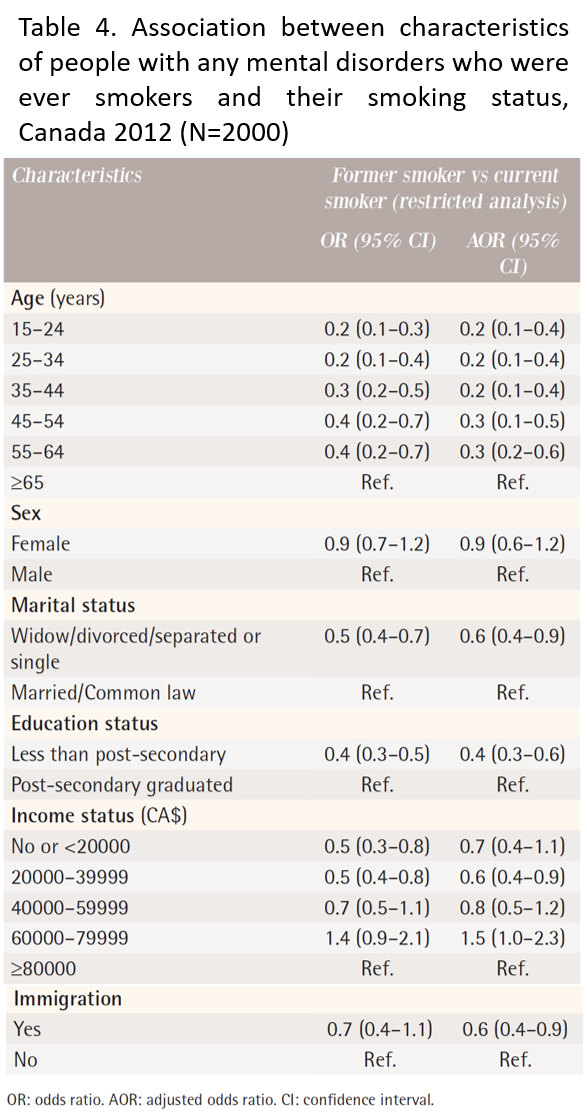Variation in characteristics of people with mental disorders across smoking status in the Canadian general population
Source: Dahal, R., Bhattarai, A., Adhikari, K. (2020). Variation in characteristics of people with mental disorders across smoking status in the Canadian general population. Tobacco Prevention & Cessation, 6(October), 61. https://doi.org/10.18332/tpc/127523
ABSTRACT
Introduction:
People with mental disorders are less successful in smoking cessation efforts. This study compared the characteristics of current smokers and former smokers with mental disorders.
Methods:
This was a cross-sectional study that used the Public Use Microdata File of the Canadian Community Health Survey 2012. Survey respondents with any mental health disorder in the last 12 months (n=2700), identified using the World Health Organization Composite International Diagnostic Interview instrument, were included in the analysis. Smoking status was classified based on self-report responses as current, former and never smoker. Logistic regression models were used to analyze the data.
Results:
The odds of quitting smoking were significantly lower among people who were single or never married (widowed/divorced/separated/single) compared to those who were married or had a common-law partner (adjusted odds ratio, AOR=0.6, 95% CI: 0.4–0.9). Similarly, significantly lower odds of quitting smoking were observed among people with less than post-secondary education compared to those with post-secondary education (AOR=0.4, 95% CI: 0.3– 0.6). Also, the odds of quitting were significantly lower among immigrants, young adults, and middle-aged adults.
Conclusions:
People who are young or middle-aged, single or never married, less educated, and immigrants, are less likely to quit smoking. This pattern underscores the socioeconomic disparities in quitting smoking among people with mental disorders. Future research should investigate why these groups continue to smoke more often than their counterparts. This will help design the smoking cessation support that address the challenges experienced by vulnerable populations and reduce the disparities.

- ISSUP members can join Networks to comment – Sign in or become a member